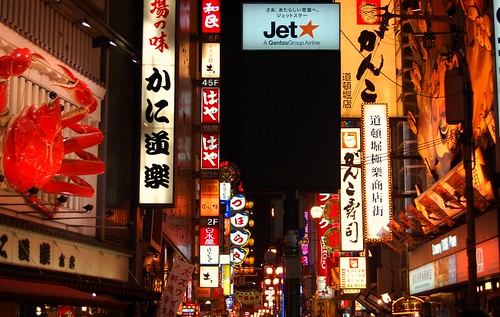
The Engaku-ji (円覚寺), officially known as the Zuirokuzan Engaku Kōshō Zenji (瑞鹿山円覚興聖禅寺), is the head temple of the Engakuji branch of the Rinzai sect of Buddhism and one of the most important Zen Buddhist temples in Japan. It is located in Kita-kamakura in Kanagawa Prefecture.
Cancel free on most hotels. Compare 102 hotels near Engakuji in Yamanouchi using 4488 real guest reviews. Earn free nights, get our Price Guarantee & make booking easier with Hotels.com! Engakuji Hotels Flights to Yokohama Things to do in Yokohama Car Rentals in Engakuji Yokohama Vacation Packages COVID-19 alert: Travel requirements are changing rapidly, including need for pre-travel COVID-19 testing and quarantine on arrival. JK Militaria offering medals, orders, badges, insignia, military aviation and pilot badges and more. High quality, Royalty-free stock photographs of Orders, Medals, Decorations and badges. The latest tweets from @EngakujiK. Pixma mp280 driver downloadwestcoastfree. Engaku-ji is one of Kamakura's five major Rinzai Zen temples. It was founded in 1282 for Zen monks to pray for soldiers who lost their lives defending Japan against Kublai Khan. Kv112 jav download torrentmilkwestern. All of the temple structures have been rebuilt over the centuries; the Shariden, a Song-style reliquary, is.
The Engakuji was founded in 1282 by Hōjō Tokimune (北条 時宗, 1251-1284), the eighth regent (執権 shikken) of the Kamakura shogunate who played a vital role in repelling the Mongolian invasion. The temple served as a residence for the Chinese Zen master Mugaku Sogen (無学祖元, 1226-1286), also known as Bukko Kokushi (仏光国師), the first abbot of the temple. Sogen had studied under some of the leading Chinese Zen masters and arrived in Japan in 1280 at the invitation of Tokimune. In 1283, the Engakuji was granted estates for its upkeep and was designated a kiganji (祈願寺, 'temple of supplication') where regular prayers were offered for the prosperity of the shogunate.
In 1386, it was ranked second among the five major Zen monasteries (五山 Gozan) in Kamakura. Throughout its history, the temple not only repeatedly suffered from disastrous conflagrations, but was also severely damaged in the Great Tōkyō Earthquake of 1923. The Relic Hall (舎利殿 Shariden) dates from the 16th century CE and has been designated a National Treasure. It is said to house a tooth of Buddha himself which was offered to Minamoto no Sanetomo (源 実朝, 1192-1219) by Emperor Ningzong (chin. 寧宗, 1168-1224).
The Engakuji was reorganised by the Zen monk Seisetsu who had the temple reconstructed at the end of the Edo period. In the Meiji Period, it turned into a centre of Zen in the Kantō region, with many unsui (雲水, Zen novices) and koji (居士, lay trainees) practising Zen meditation under the abbots Imakita Kōsen (今北洪川, 1816-1892) and Sōen Shaku (釈 宗演, 1860-1919). Today, the Engakuji houses eighteen temples and two National Treasures (the Shariden and the Great Bell).
Kamakura Temple
Important buildings:

Butsuden
The Butsuden (仏殿, Main Hall) is located beyond the Sanmon Gate and is dedicated to Hokan Shaka Nyorai (宝冠釈迦如来), Shakyamuni with a Jeweled Crown. The statue dates back to the late Kamakura period. The original building was destroyed in the Great Kantō Earthquake in 1923 and was reconstructed in 1964.
Butsuden
Hokan Shaka Nyorai
Butsuden
Sanmon Gate
The Sanmon Gate (or Main Gate) was rebuilt in 1785 during a general renovation of the Engakuji initiated by Seisetsu Shucho. The gate displays the inscription 円覚興聖禅寺 (Engaku Kosei Zenji) written by the retired Emperor Fushimi (伏見上皇, 1265-1317). The upper floor holds statues of Bodhisattva (the Eleven-Faced Kannon) and other saints.
Sanmon
Shozokuin
The Shozokuin (正続院) is a hermitage and the grave of Mugaku Sogen (Bukko Kokushi) located next to the Shariden Hall
 (舎利殿), designated a National Treasure which is said to hold the remains of Shakyamuni. Today, the Shozokuin is a training centre for Zen novices.
(舎利殿), designated a National Treasure which is said to hold the remains of Shakyamuni. Today, the Shozokuin is a training centre for Zen novices.Kaikibyo
The Kaiki-byo (開墓廟) is the mausoleum of Hōjō Tokimune (北条時宗), the patron of the Engakuji. The current building was constructed in 1811.
Hojo
The Hojo Hall (方丈) is the abbot's living quarters located next to a pond shaped like the character 心 (kokoro 'heart'). Nowadays, the Hojo is used for religious rituals, Zen meditation ceremonies, lectures, sermons, and the Autumn Treasure Exhibition.
Hojo
.jpg)
Engakuji Tempel
Ogane
The Ōgane (大鐘, Grand Bell) is a National Treasure and was cast by Hojo Sadatoki in 1301. Standing 2.5 metres tall, it is the largest temple bell in Kamakura.
Ogane
More photos in the Engakuji Temple album.
Access and admission:
The Engakuji is located very close to Kita-Kamakura Station on the JR Yokosuka Line. The admission fee is 300 JPY, some of the subtemples charge an additional 100 JPY per person.
Address: 409, Yamanouchi, Kamakura, Kanagawa 247-0062
Zen meditation:
There are Zen meetings every morning at the Butsuden: 5:30 - 6:30 in summer, 6:00 - 7:00 in winter. The Sunday Sermon at Hojo takes place at 9:00 - 10:00.
References:
- Engakuji Official Website (in Japanese)

Engakuji Temple
|
